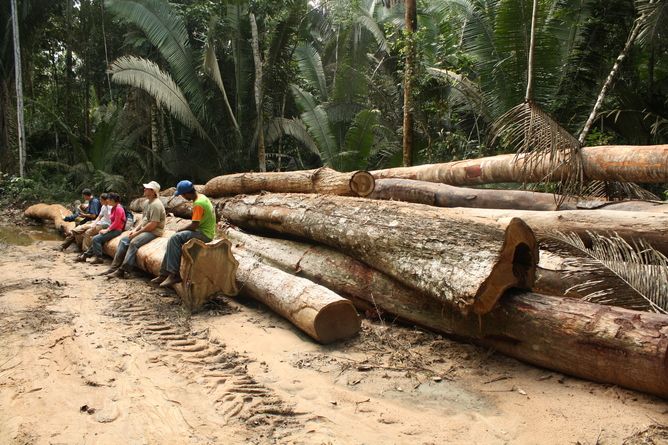
Lost Microbes are Eroding Amazon’s Ability to Capture Carbon (Op-Ed)

This article was originally published at The Conversation. The publication contributed the article to LiveScience's Expert Voices: Op-Ed & Insights.
Beneath the lush forests of the Amazon is a whole different level of diversity that new research says may be one of the keys to understanding how to stem the global impacts of deforestation.
The Amazon rainforest is known as one of Earth’s hotspots for diversity. It contains at least 40,000 plant species, 5,500 animal species and 100,000 insect species. These have been a great source for the discovery of new medicines, with at least 120 approved for use. Despite its great plant and animal diversity, it is one of the least understood ecosystems for its microbial diversity. There are 100 million microorganisms in a single gram of forest soil, making them the largest repository in the world of novel genes.
These microbes are essential to nutrient recycling. They decompose dead organic matter, through a process called mineralisation, releasing mineral nutrients that plants absorb through their roots, allowing the forest to grow. As trees grow, they capture carbon dioxide from the air through the process of photosynthesis, and, in the Amazon, this process occurs at impressive levels. Owing to its size, the forest absorbs 1.5 billion tons of CO2 from the atmosphere every year – making it the largest terrestrial sink of this greenhouse gas.
Large amounts of nitrogen are needed to achieve the Amazon’s role as a carbon sink. In the rainforest, that comes primarily from the natural process of nitrogen fixation performed by microbes called diazotrophs. They break apart molecules of nitrogen that is essential for all living things. But, up until now, no one has looked at how the function of these microbes changes when a rainforest is converted to a pasture, something that is happening at an alarming rate in many parts of the Amazon.
In work published in the journal Applied and Environmental Microbiology, we found a surprisingly large shift in microbial community composition when rainforests became pastures, confirming earlier studies. This may have major implication on how nutrients are cycled in the new ecosystem.
Any changes to the nitrogen cycle are likely to affect the carbon cycle and the forest’s capacity to sequester carbon dioxide. The process of deforestation is causing an addition of 1.6 billion tons of CO2 to the atmosphere per year, substantially increasing greenhouse gases.
Sign up for the Live Science daily newsletter now
Get the world’s most fascinating discoveries delivered straight to your inbox.
While these findings reinforce the toll deforestation is having, they also offer some hope.
Our examination revealed that approximately 50% of Amazon’s abandoned pastures are going through secondary forest formation. It is a process that happens mostly by chance, and when it happens diazotrophic communities tend to return to similar composition of the former forest.
The results imply that there is still time to conserve the immense genetic diversity of microbes as sources of new antibiotics and absorbers of carbon dioxide. Also, using our results, we can start devising new methods to aid the recovery of disturbed ecosystems – imagine a cocktail of microbes added for ecosystem restoration.
If nothing else, our research makes one thing clear: in the Amazon, the invisible microbes do as much as the now-disappearing trees to help our environment.
Jorge Rodrigues receives funding from US Department of Agriculture, US Department of Energy/Joint Genome Institute.
This article was originally published at The Conversation. Read the original article. The views expressed are those of the author and do not necessarily reflect the views of the publisher. This version of the article was originally published on LiveScience.













